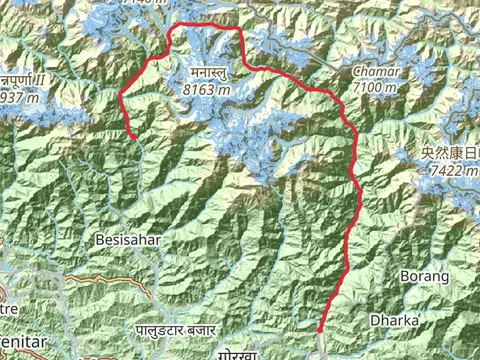"Discover Nepal's majestic Himalayas, blending breathtaking treks with rich culture and warm hospitality."
Embark on an unforgettable journey through Nepal, where the majestic Himalayas beckon with trails that weave through lush rhododendron forests, ancient villages, and serene monasteries. Feel the thrill of trekking the iconic Annapurna Circuit or the legendary Everest Base Camp, where every step offers breathtaking vistas and a deep connection to nature and culture. Embrace the warmth of the Nepali people, savor the rich flavors of local cuisine, and let the spirit of adventure guide you through this hiker's paradise.
Most popular hikes
FAQs about hiking in Nepal






More hikes in Nepal
by difficulty




















